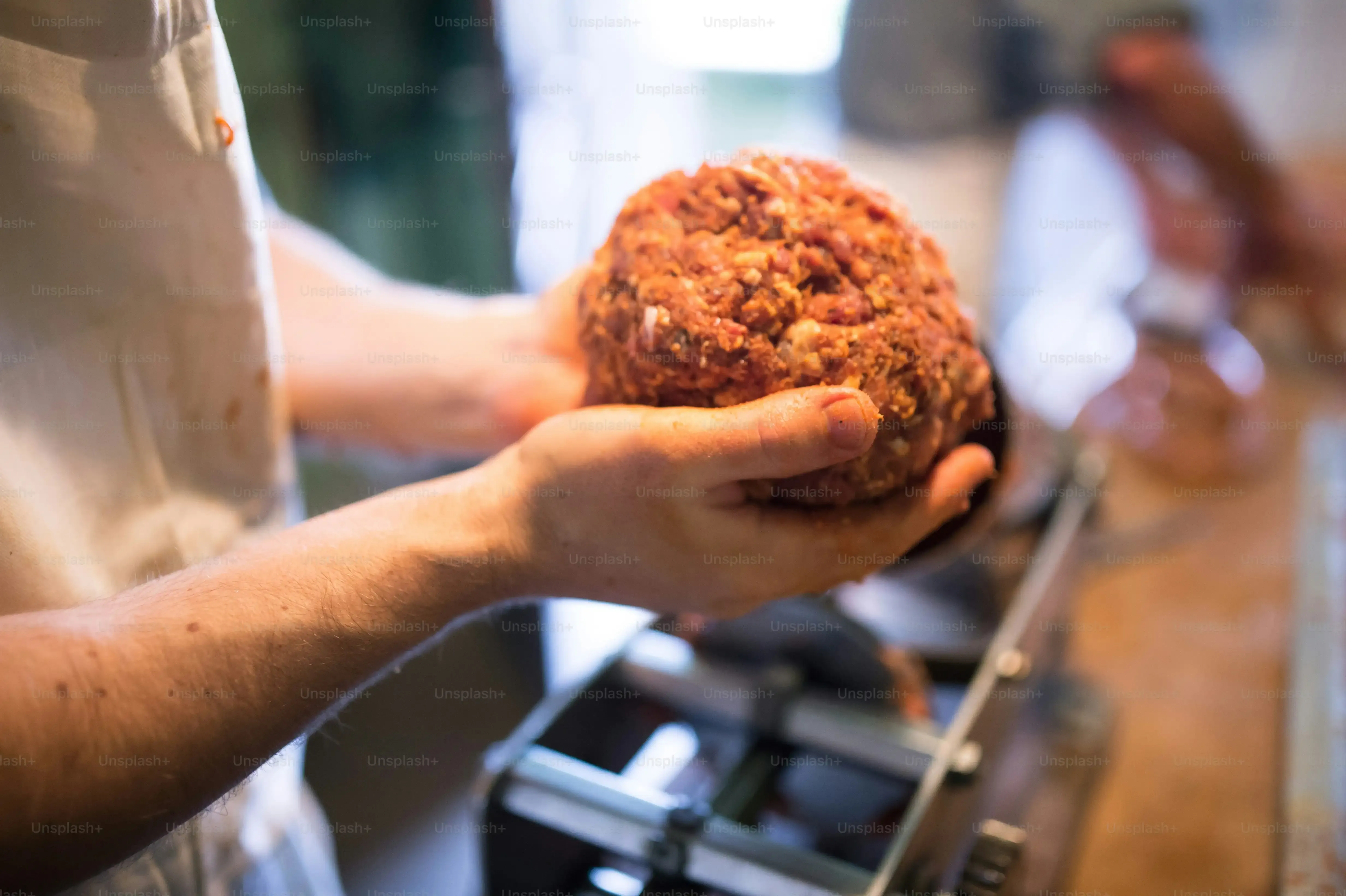Table of Contents
Let’s be honest. You’ve probably had your share of dry, flavorless meatballs. They sit there, sad little spheres, soaking in sauce and offering little in return. Baking is clean, sure, but does it deliver that golden, crispy exterior that locks in all the juicy goodness? Probably not.
Why Fry? The Case for an Italian Meatball Recipe Fried

Why Fry? The Case for an Italian Meatball Recipe Fried
The Golden Crust You Can't Get Otherwise
Let's cut to the chase. The primary reason you consider an italian meatball recipe fried is the crust. Baking gives you a uniform, often pale, exterior. Simmering them from raw leaves them soft, sometimes mushy, on the outside. Frying, however, introduces the Maillard reaction and caramelization on the surface of the meat. This isn't just about color; it creates a thin, savory shell that provides a satisfying textural contrast to the tender interior. That little bit of crunch, that rich brown flavor layer, fundamentally changes the meatball experience. It's the difference between a boiled potato and a roasted one – same ingredient, vastly different result.
Faster Flavor Development and Cooking
Frying also cooks meatballs quickly and efficiently. High heat sears the exterior fast, locking in juices. While you still need to ensure the inside is cooked through, the initial high temperature jumpstarts the process in a way simmering doesn't. This speed isn't just about getting dinner on the table faster; it means less time for the meat to potentially dry out. You get intense flavor development on the outside almost instantly. Think about searing a steak – you do it for flavor and texture, not just to cook it. The same principle applies to an italian meatball recipe fried.
- Superior exterior texture (crispy, golden)
- Enhanced flavor through searing
- Faster initial cooking
- Better juice retention
- Adds a satisfying 'pop' before hitting the soft interior
Addressing the Greasy Myth
Now, some folks shy away, picturing a greasy mess. And yes, if you don't do it right, you'll get that. But a proper italian meatball recipe fried, executed correctly with the right oil temperature and drainage, isn't inherently greasy. The goal isn't to saturate the meatball with oil, but to use the hot oil as a medium to quickly cook and brown the exterior. A quick drain on paper towels takes care of surface oil. The payoff – that incredible crust and juicy inside – is well worth the minimal effort to manage the oil.
Essential Ingredients for Your Italian Meatball Recipe Fried

Essential Ingredients for Your Italian Meatball Recipe Fried
Picking the Right Meat Blend
let's talk meat. You can't just grab any old ground beef and expect magic. For a truly tender and flavorful italian meatball recipe fried, you need fat. Lean meat dries out too fast, especially when hitting hot oil. A classic blend is 80% lean ground beef. Some folks swear by a mix of beef and pork, maybe even a little veal. The pork adds moisture and a slightly different depth of flavor. Don't be afraid to experiment, but whatever you do, avoid anything leaner than 85% for frying. Fat equals flavor and juiciness here.
Binders and Base Flavors
Meat alone won't hold together perfectly, and it needs a flavor base. Breadcrumbs are key binders, but not just any crumbs. Stale bread soaked in milk or water, squeezed out, gives a lighter texture than dry crumbs. An egg or two helps hold it all together. Don't skip the onion and garlic – finely minced or grated is best so they integrate smoothly. These aromatics are the foundation of that classic Italian taste and really come alive when they hit the hot oil during the frying process for your italian meatball recipe fried.
- 80/20 Ground Beef (or a beef/pork/veal mix)
- Stale bread (Italian or crusty)
- Milk or water for soaking bread
- Eggs
- Finely minced onion
- Minced garlic
- Salt and black pepper
- Grated Parmesan or Pecorino cheese
- Fresh parsley
The Cheese and Herb Finishers
No Italian meatball is complete without cheese and fresh herbs. Grated hard cheese like Parmesan or Pecorino Romano adds a salty, nutty depth. Use the good stuff if you can; the pre-shredded stuff often has anti-caking agents that affect texture. Fresh parsley, finely chopped, provides freshness and color. These elements aren't just thrown in; they are crucial for building the layered flavor profile that makes an italian meatball recipe fried sing. They lift the richness of the meat and frying.
Mixing, Rolling, and Getting Ready to Fry Your Italian Meatball Recipe

Mixing, Rolling, and Getting Ready to Fry Your Italian Meatball Recipe
The Gentle Art of Mixing
you've got your ingredients prepped – meat, soaked bread, eggs, cheese, herbs, the whole crew. Now comes the crucial step before you even think about getting that italian meatball recipe fried into the oil. Mixing. This isn't like kneading dough. Your goal is to combine everything just until it holds together. Overmixing is the enemy of tender meatballs. When you squish and work the meat too much, you develop the proteins, making the final product tough and dense. Use your hands, yes, but be gentle. Fold the ingredients together until they are just incorporated. It should still feel a bit loose, not like a paste.
Rolling for Uniformity and Setting Up the Fry Zone
Once your mix is ready, it's time to roll. Aim for meatballs roughly the same size – maybe golf ball or slightly smaller. Consistency is key here for your italian meatball recipe fried. Why? Because they'll cook at the same rate. If you have some tiny ones and some giants, the little guys will be burnt by the time the big ones are cooked through. Use a light touch when rolling; don't compress them too much. As you roll, place them on a plate or baking sheet. While you're rolling, start setting up your frying station. You'll need a heavy-bottomed pan (like a cast-iron skillet or Dutch oven), about an inch or two of neutral oil (like vegetable, canola, or grapeseed), and a thermometer if you want to be precise. You'll also need a plate lined with paper towels for draining.
- Use a gentle touch when mixing to avoid tough meatballs.
- Mix just until ingredients are combined, not uniform paste.
- Roll meatballs to a consistent size for even cooking.
- Don't over-compress when rolling.
- Set up your frying station *before* heating the oil.
The Art of the Fry: Cooking Your Italian Meatball Recipe

The Art of the Fry: Cooking Your Italian Meatball Recipe
Heating the Oil and Getting Started
you've rolled your perfect little orbs and your frying station is set. Now comes the moment of truth for The Art of the Fry: Cooking Your Italian Meatball Recipe. Pour your neutral oil into the heavy-bottomed pan. You want enough so the meatballs are about halfway submerged, maybe a little more. Heating the oil is critical. Too cool, and the meatballs soak up grease and cook slowly, getting tough. Too hot, and the outside burns before the inside cooks. Aim for around 350-375°F (175-190°C). If you don't have a thermometer, you can test it by dropping a tiny pinch of the meat mixture in; it should sizzle immediately but not violently. Once the oil is hot, carefully add the meatballs in batches. Don't overcrowd the pan – they need space to fry properly and the oil temperature will drop too much if you add too many at once. Give them room to breathe and get that beautiful golden crust.
Serving and Storing Your Delicious Italian Meatball Recipe Fried

Serving and Storing Your Delicious Italian Meatball Recipe Fried
The Immediate Payoff: Serving Right Away
you've pulled them from the hot oil, drained them quickly on paper towels, and now they sit there, golden-brown and smelling incredible. This is arguably the best moment for your italian meatball recipe fried. That crispy exterior is at its peak right now. You can absolutely pop one (or three) straight into your mouth. No sauce needed yet. Just pure, unadulterated fried meatball goodness. It’s a snack, a test, a reward for not burning down the kitchen. This is the texture you worked for, so appreciate it before it softens slightly in sauce.
Sauce or No Sauce? The Serving Debate
Now, the classic move after frying your italian meatball recipe fried is dropping them into a simmering pot of marinara. This softens the crust slightly but infuses the meatballs with sauce flavor. It's a valid and delicious path. However, you don't *have* to drown them. Consider serving them alongside the sauce, letting people add as much or as little as they like. They are also fantastic on their own as appetizers, perhaps with a little grated cheese on top. Or, slice them up for a killer sandwich. The point is, the frying gives you options beyond just the traditional pasta dish.
What are some ways to serve these crispy delights?
- Straight up, hot from the pan (careful, they're addictive).
- Simmered gently in marinara sauce.
- Alongside sauce for dipping.
- As an appetizer with grated cheese or a simple aioli.
- Sliced for sandwiches or subs.
- With toothpicks at a party (watch them disappear).
Keeping the Leftovers: Storing Your Fried Meatballs
Let's pretend there are leftovers from your italian meatball recipe fried. It's a big pretend, but possible. Once they've cooled completely, store them in an airtight container in the refrigerator for 3-4 days. If you want to keep them longer, these meatballs freeze beautifully. Place the cooled meatballs on a baking sheet in a single layer and freeze until solid. Then, transfer them to a freezer-safe bag or container. They'll keep in the freezer for up to 3 months. Reheat gently in sauce, in a skillet, or even briefly in an air fryer to try and regain some crispness.
Fry On: The Undeniable Truth About Fried Meatballs
So there you have it. Baking has its place, sure, but for meatballs that truly sing – crispy on the outside, juicy within – frying is the clear winner. You've learned the mix, the technique, and the payoff is undeniable. These aren't just meatballs; they're a statement. Serve them simply, toss them in sauce, or eat them straight from the cooling rack (we won't judge). Once you go fried with your Italian meatball recipe, going back might just feel like settling.